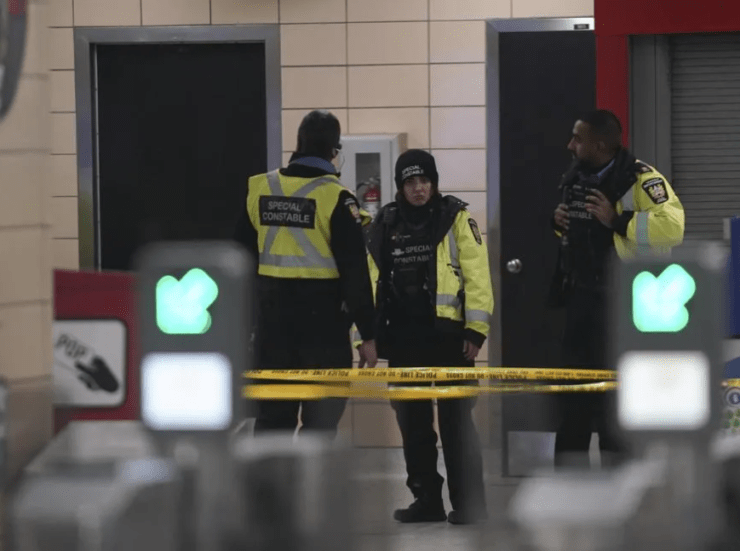
After a youngster was fatally stabbed at a Keele subway station on Saturday night, police accused a 22-year-old homeless man with first-degree murder. The incident, which took place shortly before 9 p.m. on the lower level of a busy elevated train station, was described by police as unintentional and unjustified. It was part of an increasing incidence of violent violence in a transit system that is still fighting to recover from a decrease in ridership brought on by COVID-19. It was the fourth killing on or around TTC property in less than a year.
Police identified Toronto native Gabriel Magalhaes, 16, as the stabbing victim from Saturday on Sunday. In Keir, close to the escalator that leads to the westbound underground platform, they think he was attacked while seated on a bench in front of a line of pay phones. Magalhaes was treated by paramedics on the scene; they attempted to take him to the hospital, but he was too seriously hurt. His wounds caused his death.
Police said that the person left the station, which is across from High Park and very close to a business offering payday loans. Later on Saturday, they detained and accused Jordan O’Brien-Tobin of killing Magalhaes. On Sunday morning, O’Brien-Tobin was scheduled to appear in Toronto Crown Court. The attack on Saturday happens as North American transportation networks, including the TTC, are coming under more and more scrutiny. Last year, there were significantly fewer transit drivers in Toronto than there were before to the pandemic. Serious violence has increased on TTC buses, trains, trolleys, and stations in the meantime.
There were 1,068 violent incidents involving TTC passengers in 2022. In contrast, 669 cases were reported in 2019, the year prior to the pandemic. Despite the fact that overall ridership is only 67% more than it was three years ago, violence towards operators has also grown. The attacks, which have been repeatedly characterized by ferocity and seeming arbitrariness, have occasionally taken over local news headlines in recent months and may yet have an impact on the approaching Toronto mayoral by-election.
Nevertheless, it’s not obvious what the next mayor can actually do to stop the upward trend. Traffic violence has increased in major urban areas all over the continent since COVID-19 caused an extraordinary decline in public transportation use three years ago.
In late January, the police department put more stripes to the TTC. The increase persisted for a full six weeks before police services were suspended in mid-March as officers put in extra hours. The TTC itself sends out officers to patrol the system during rush hours, and last week it launched a trial program in which social service workers from LOFT will engage with vulnerable groups on the system itself as they transfer stations and use the train as a de facto sanctuary. 50 additional SWAT police will be hired by the city to patrol the TTC.
The death of a 16-year-old child at a subway station, according to deputy mayor Jennifer McKelvey, was “a tragedy,” she said on Sunday. She issued a statement saying, “My heart goes out to the family and friends of Gabriel Maghaas who are grieving this loss.” “We cannot accept any site that is not safe,” the TTC stated. “The TTC must be a safe place for both customers and transit employees.”
On Sunday, there was little evidence of the attack that occurred on Saturday at Kiel Station: there was no memorial, no blood, and no indication that a child’s life had just recently ended there.
When the police station reopened Sunday morning after being closed for a few hours on Saturday, it had been well cleaned, albeit not entirely free of any evident traces of violent crime.
